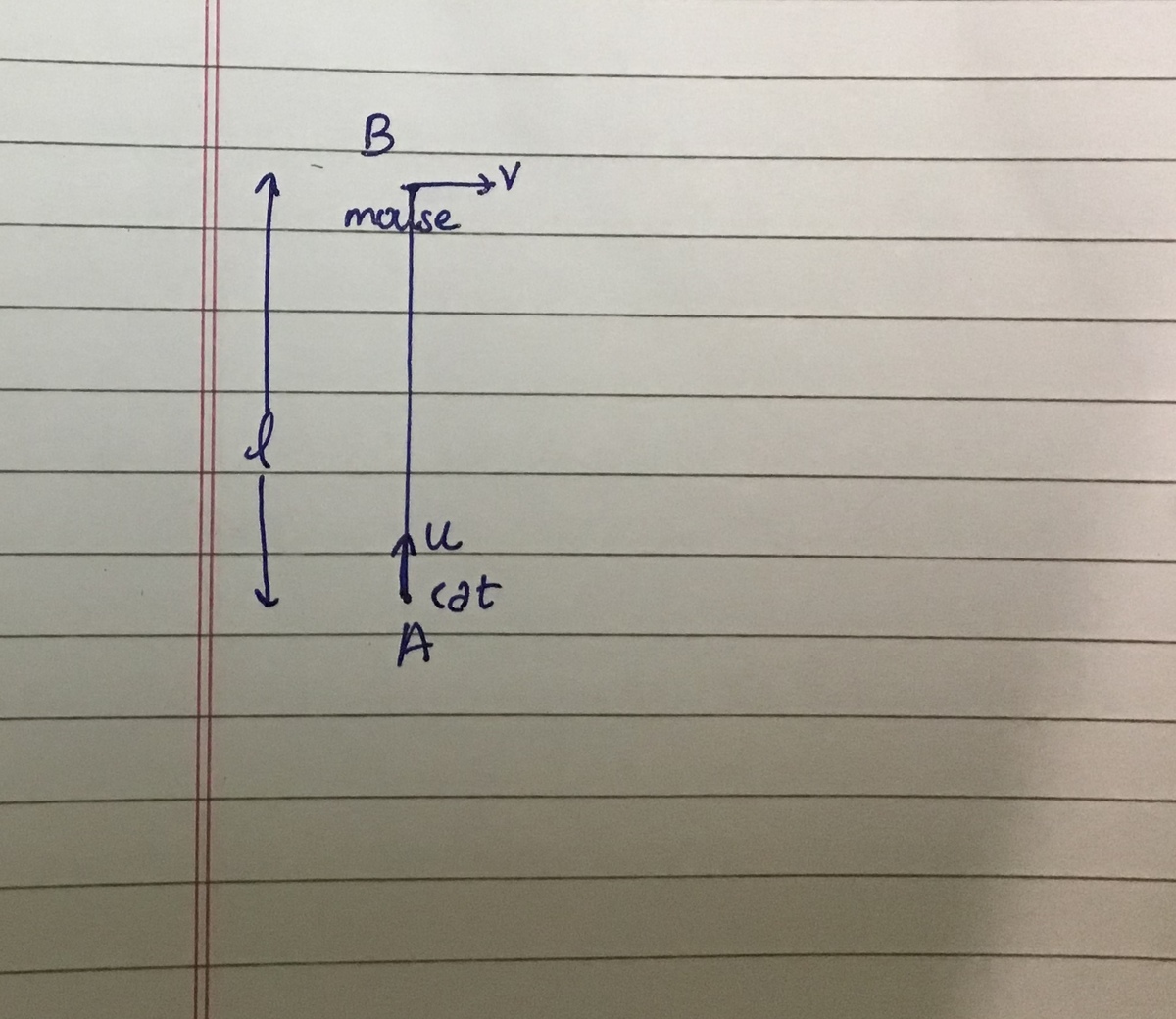The cat mouse trajectory
A cat is initially at A and a mouse at B.
The mouse starts moving perpendicular to AB with constant speed v.The cat moves towards the mouse with constant speed u, in order to catch it in such a way that it’s velocity vector always points towards the mouse.
Find the trajectory traced by the cat.

No vote yet
1 vote
Easy Math Editor
This discussion board is a place to discuss our Daily Challenges and the math and science related to those challenges. Explanations are more than just a solution — they should explain the steps and thinking strategies that you used to obtain the solution. Comments should further the discussion of math and science.
When posting on Brilliant:
*italics*or_italics_**bold**or__bold__paragraph 1
paragraph 2
[example link](https://brilliant.org)> This is a quote# I indented these lines # 4 spaces, and now they show # up as a code block. print "hello world"\(...\)or\[...\]to ensure proper formatting.2 \times 32^{34}a_{i-1}\frac{2}{3}\sqrt{2}\sum_{i=1}^3\sin \theta\boxed{123}Comments
The trajectory can be obtained by solving the following set of coupled differential equations:
dtdx=(vt−x)2+(L−y)2u(vt−x) dtdy=(vt−x)2+(L−y)2u(L−y)
x(0)=y(0)=0
The way these equations are derived are as such:
tanθ=vt−xL−y dtdx=ucosθ dtdy=usinθ
Eliminating θ gives the equations listed above. This set of equations needs to be solved numerically. If you want more information like plots, etc., I will post if requested.